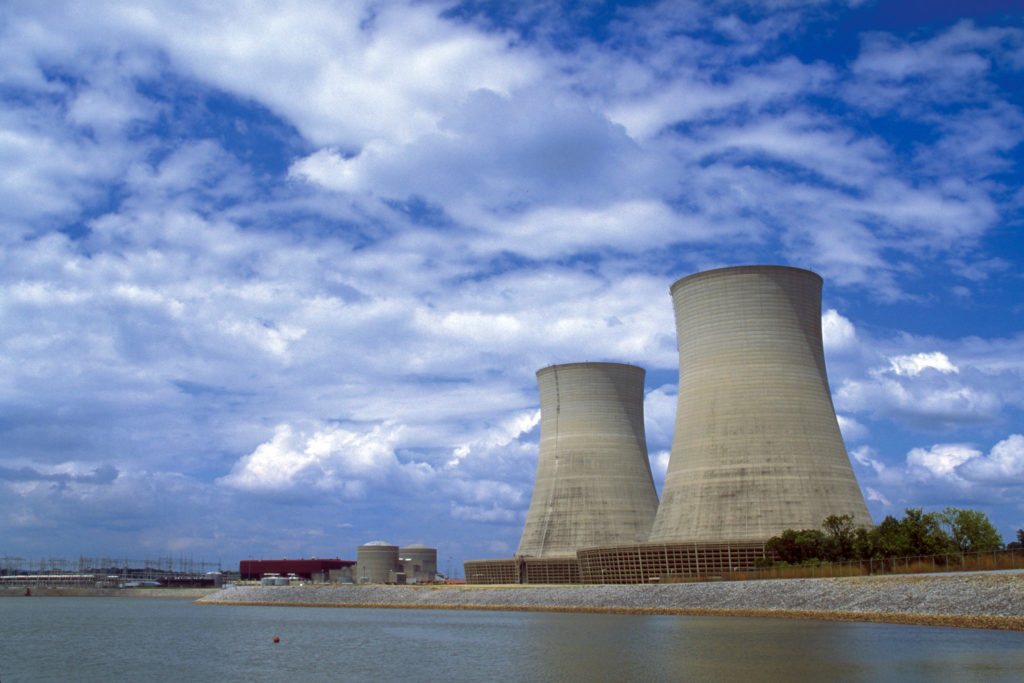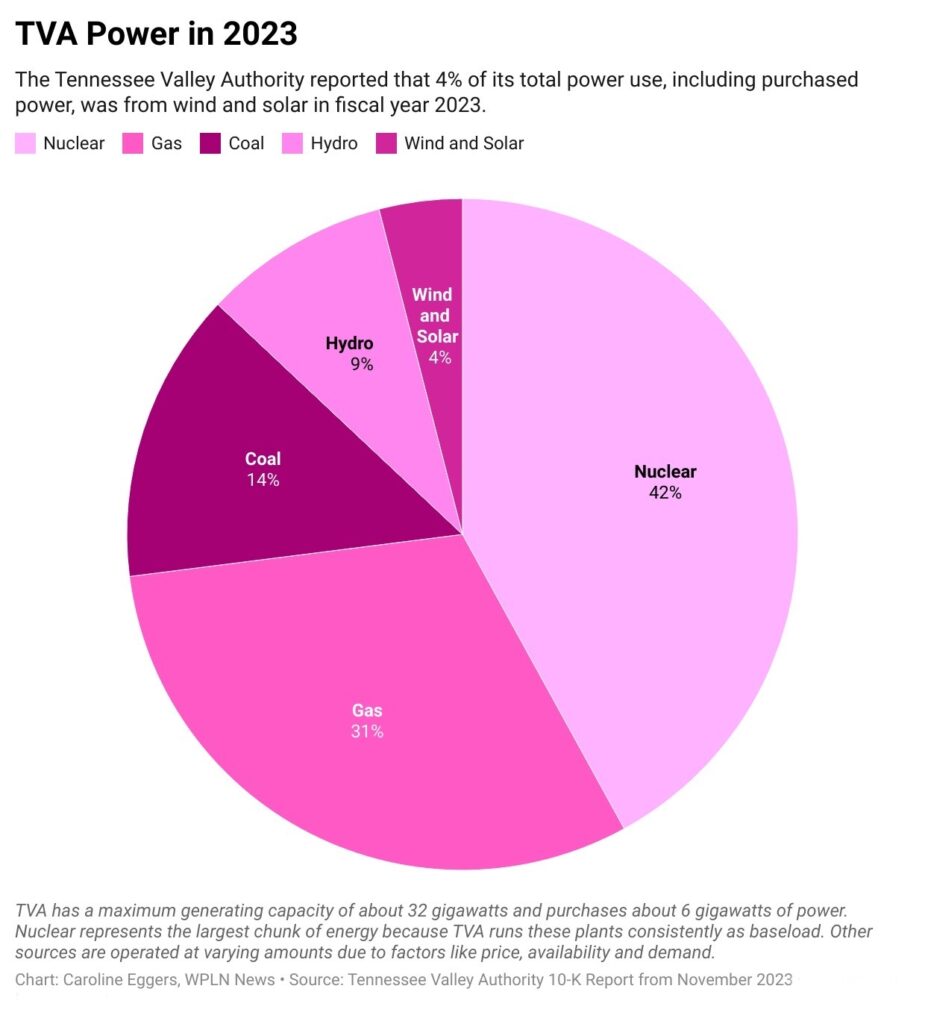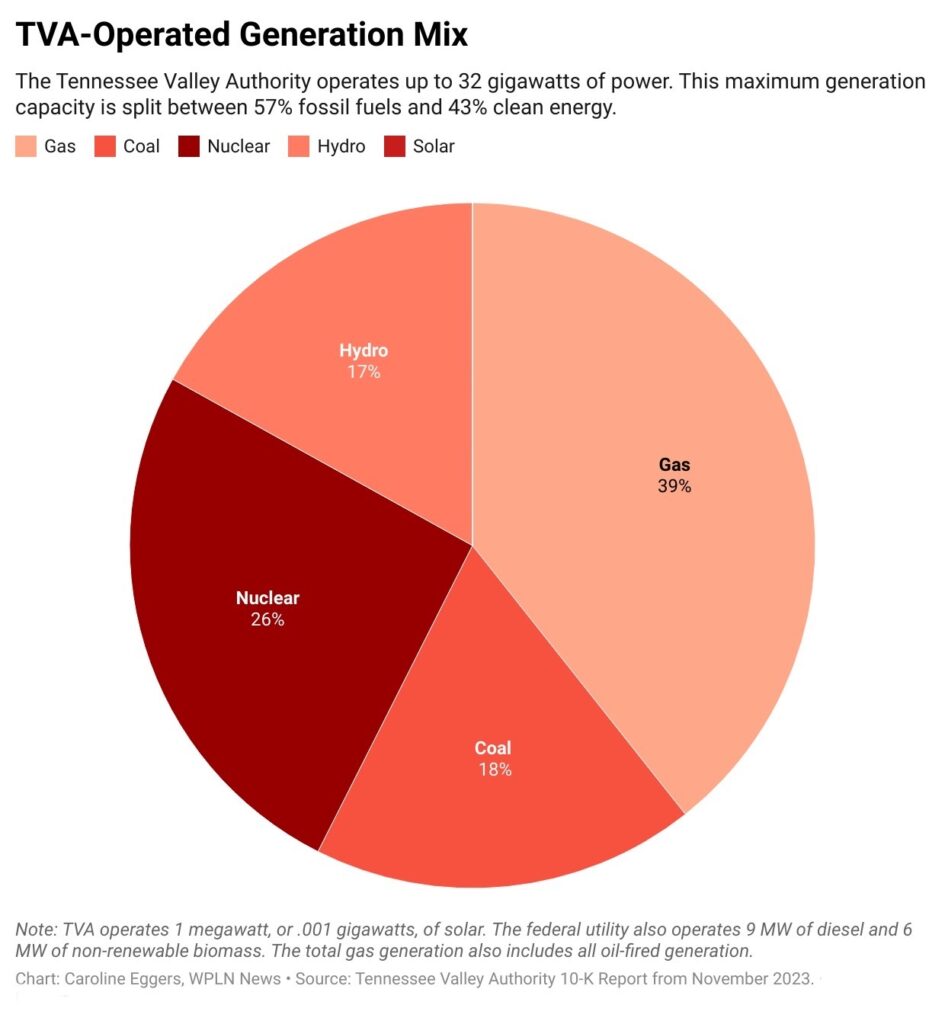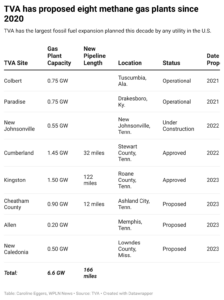
The Tennessee Valley Authority is one of the largest utilities in the nation, providing a massive amount of energy for 10 million people.
This energy affects our health, climate and monthly bills.
TVA has not updated the breakdown of its electricity mix into percentages on its website in a few years, so WPLN reviewed the latest data TVA submitted to Congress about its energy.
The power system can be viewed in two ways. There is the maximum amount of electricity that TVA can generate itself, and there is the electricity that TVA actually uses — and that includes power purchased by TVA.


TVA does not purchase nuclear power. The reason these numbers do not match in the two charts is that TVA runs its nuclear power plants consistently as baseload. Other energy sources are operated at varying amounts of time throughout the year due to factors like price, availability and demand.
TVA has a total electricity capacity of 38 gigawatts. It operates up to 32 GW and purchases about 6 GW of power. This can also be written as 38,000 megawatts — WPLN uses gigawatts, or GW, as it is simpler for readers to understand the scale.
During the last fiscal year, TVA’s total power use, including purchased power, was split between 42% nuclear, 31% gas, 14% coal, 9% hydro and 4% wind and solar. Energy efficiency can also be considered a resource, as it reduces the amount of energy needed on the system. In fiscal year 2023, TVA used energy efficiency programs to reduce the equivalent of 1.3% of its total power needs.
The total capacity for generation by TVA-owned facilities — the 32 gigawatts — was 39% gas, 26% nuclear, 18% coal, 16% hydro and .003% solar.
Generating capacity can be viewed in terms of summer peaks, winter peaks or how the manufacturer of an energy source defines it, according to the U.S. Energy Information Administration. TVA defined its capacity last year by its potential to produce enough electricity to cover peak demand during summertime heat. (TVA’s capacity was tested during an Arctic blast in December 2022, when a lot of fossil fuel generation failed, forcing TVA to issue rolling blackouts, and again during an Arctic blast this past January — when residents voluntarily lowering their thermostats shaved as much as 10% off of peak demand.)
 Courtesy Tennessee Valley Authority
Courtesy Tennessee Valley Authority TVA created a map of its generating assets in March 2024.
This information was based on TVA’s latest 10-K filing, which TVA submitted to Congress in November.
Since then, TVA has brought a new gas plant fully online in Kentucky. The Paradise Combustion Turbine Plant, which is near the gas plant that replaced an old coal plant there in 2017, has a capacity of .75-gigawatts, enough to provide power to 400,000 homes, according to an announcement TVA shared on Wednesday.
TVA has planned eight gas plants this decade. The Paradise project and one other project in Alabama are now operational. Together, the eight gas plants are the equivalent of 20% of TVA’s generating assets.
TVA’s energy future
In addition to more methane gas plants, TVA plans to invest $1.5 billion in energy efficiency and demand response programs to reduce its total energy needs in the next few years. TVA also plans to add 10 gigawatts of solar power to its system and retire all coal by 2035. Further out, TVA may expand its nuclear fleet with small modular reactors.
Electricity demand is expected to significantly increase, depending on factors like grid modernization, storage, energy efficiency and the amount of new, energy-intensive manufacturing facilities. Power demand increased by 3% from 2019 to 2022, according to TVA.


